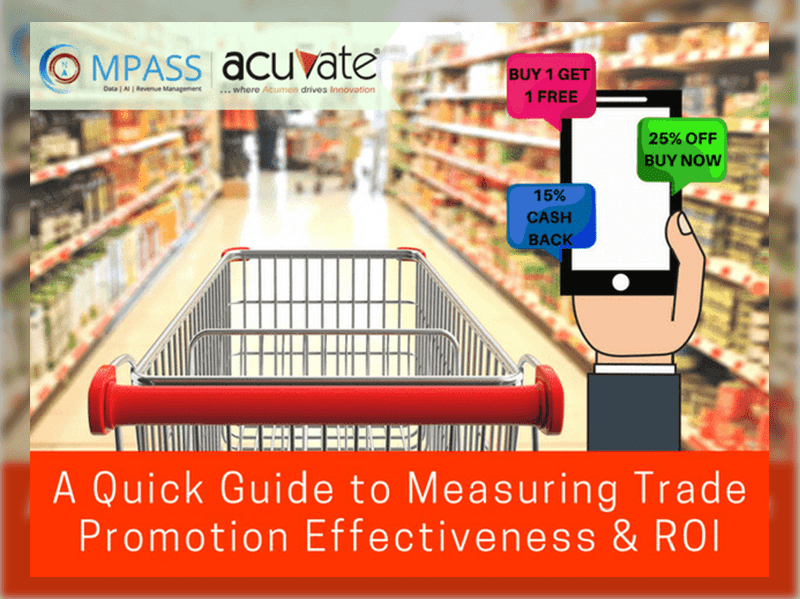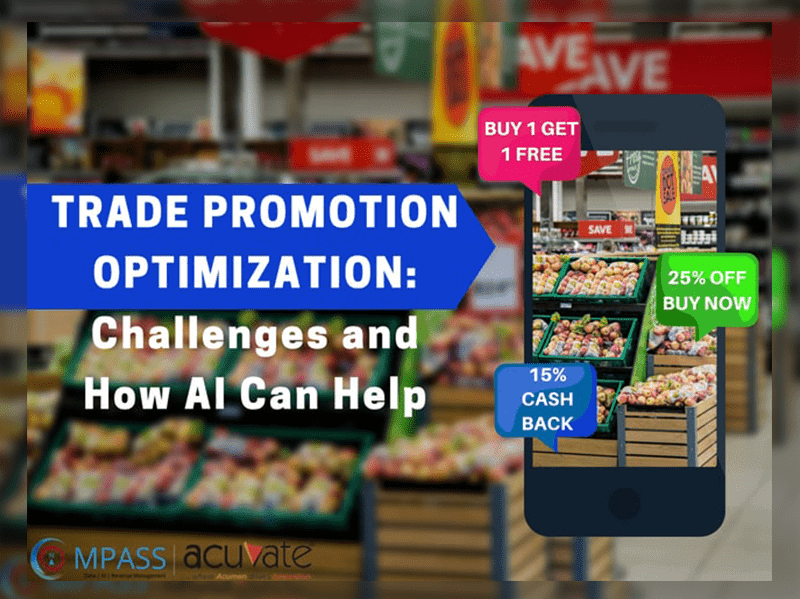20 million price points per year complicate the matter of pricing consumer packaged goods (CPG); with each price point exposed to the further influence of discount, rebate, and trade allowance categories, combined with customer-specific trade terms negotiated by powerful retailers. With so many variables it is extremely complex and time-consuming to determine competitive prices that add to the bottom line and also benefit the final consumer.
With low-profit margins per unit, assigning the optimal price to a CPG is a matter of competitive advantage. With CPG pricing every percentage point matters. A combined research by Nielsen, McKinsey, and GBA has revealed that ‘Pricing winners who adopted best practices in devising a pricing strategy were able to increase unit prices by 1.2 percentage points more than the category average. At the same time, they gained share by growing sales by almost a full percentage point ahead of their peers.’
Best Practices for Designing a Winning Cpg Pricing Strategy
While some best practices are technology interventions, others are about partnerships. However, the success of any of them is tied back to access to timely and competitive, data-driven insights. Some of the practices that have led to a winning CPG pricing strategy are:
Transparency:
The consumer wants to know how the product is made and how the price is determined. While CPG manufacturers are reasonably dependant on input costs to determine the price, they also need to include other costs pertaining to the trade. If the retailer and manufacturer find a way to convey the story behind a product’s price, the consumer is more inclined to build trust into that product.
It is not easy to share the accurate price with the consumer, round the clock across multiple product categories. With data analytics and harnessing the digital experience using handheld devices, retailers can pass this challenge. To achieve transparency, external environment factors need to be included in the strategy. 56% of retail consumers said they would be very likely to stay loyal to a completely transparent brand for life.
Pricing Elasticity in Co-Relation to the Competitive Edge:
Standard pricing and MRSPs don’t provide positive returns or increase profitability while dealing with CPGs. To achieve dynamic pricing, manufacturers and retailers need to adopt ‘predictive econometric modeling.’ This further relies on Price analytics. Models like own-price elasticity which signifies that changes in prices affect sales volumes; cross-price elasticity, where changes in prices affect competitive edge and the popular price corridor model which defines a price range to maintain a share in respect with the competition.
Data analytics helps marketers in creating multiple promotional prices in real-time response to market changes, using a plug and play simulation. Apart from promotion optimization which is most demanding output in real-time, marketers can also create the optimal standard prices and proactively determine future prices for available inventory. Data analytics helps in avoiding situations where more than two-thirds of trade promotions that happen in the US each year don’t break even, as Nielsen has identified.
Retailer Engagement:
Retailers are an influential part of the pricing power play. Regular and frequent pricing discussions with retailers is a great practice to establish profitable prices. However, this practice will fall apart without the support of insights generated by analytics.
A Global Consumer Goods Business Increased Revenue by 3%
Using Compass: An AI-Powered Trade promotion Optimization Solution
Nielsen has identified in a survey that “winning pricing strategists continue to engage retailers in pricing discussions at regular intervals (at least once a year), framing these discussions in ways that are relevant to retailers and taking into consideration the market environment and pace of inflation. Winners are also more likely to take a multidimensional approach in pricing discussions, emphasizing retailer profits and product or category investment—not just commodity costs.”
Pricing Analytics:
With CPGs, price decisions are not solely in the hands of the brands’ owners and manufacturers. Retailers who also take ownership of the brand’s price image have the ability to apply steep discounts or hitting the manufacturer’s suggested retail price (MSRP) quite often. Typically retailers avoid presenting the latter option to their customers and that plays on the brand image of a premium pricing product. Retailers involved in dynamic pricing convince their customers that the best price for a CPG is the price that is established for the day through a promotion. They enjoy this advantage of revising the price to their benefit, by employing data analytics. Lack of pricing analytics will not just create a competitive disadvantage, but also create price wars between the manufacturer and their own set of distribution channels
Measure & Optimize Your Trade Promotions Effectively
With Compass: An AI-Powered Trade Promotions Optimization Solution
Unlike traditional analytics, advanced analytics like predictive and prescriptive analytics which are powered by AI have the ability to harness both unstructured and structured data and transform them into meaningful insights. They help in addressing the “Crucial what-if scenarios” – Questions like “What happens if I increase the price of a Brand A by xx and decrease the price of Brand X by yy, what will be the outcome?, how will it affect my profits? And so on.” In a fast-moving industry like CPG, advanced analytics is a must for decision-makers to develop fact-based recommendations and increase accuracy in decision-making.
Pricing analytics provides deep insights to decision makers about consumers and their response to a price point at different times of the year. However, when CPG manufacturers start using pricing analytics, they draw an advantage of establishing an optimal price point for products hitting the market, batch after batch. Deloitte says using Advanced Analytics, “pricing solutions can expect an immediate margin performance improvement of 2%–4% and a sales growth of 1%–2%.”
Pricing strategies in CPG firms are usually built by revenue growth management executives. COMPASS, a single-window suite built for RGM professionals which leverages advanced analytics, Big Data from multiple sources like POS, Digital media, weather, primary and secondary sales and provides insights for marketing campaigns and trade promotion strategies, price strategies and supply chain optimization. COMPASS is built with the sole mission – to make data work for RGM executives. It is equipped with chatbots as well for quick data access.
Using advanced analytics like Predictive and Prescriptive Analytics for setting pricing strategies brings in a competitive advantage with a high probability of enhancing profitability. Learn more about COMPASS that is a tailor-made suite, combining analytics, AI and chatbots for CPG companies.
If you’d like to learn more about this topic, please feel free to get in touch with one of our experts for a personalized consultation.




